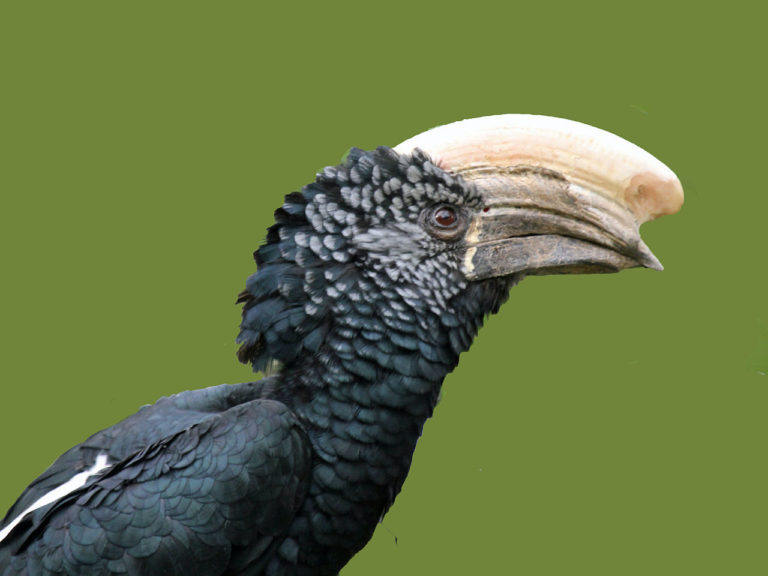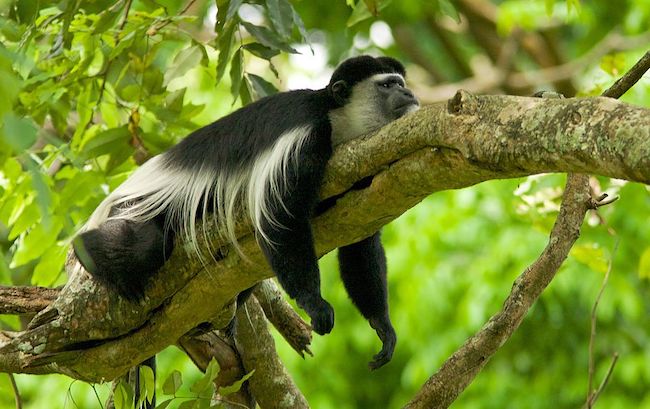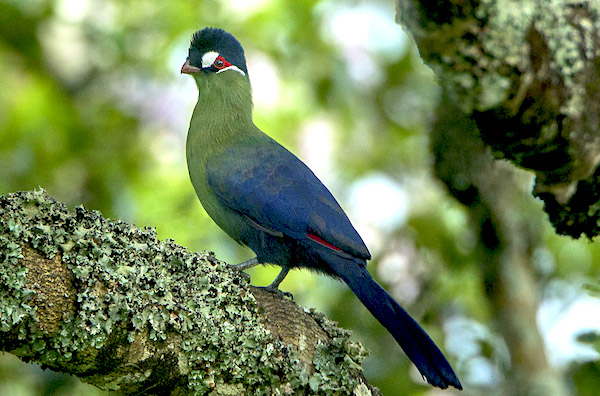Kilimanjaro - Birding and trekking to the summit in a week.



Tour Date:
Oct 25-31, 2026
Tour Price (Per Person):
From $2600
Single supplement: Not available during the trek, except in Arusha and Moshi.
Note that tips are expected by porters and staff, plan generously for this.
Tour Type:
Hard trek. Fitness required. You may stay back from the top if you don’t feel up to it.
Kilimanjaro!
Just taste the word.
Smell it!
Feel it!
Dream it!
7 Wonders Birding is probably the first birding tour company that offers an itinerary that combines birding and trekking to the summit of Kilimanjaro.
There is a huge draw to climb Kilimanjaro and it is very high on non-birders bucket list. It is hard to know how many birders are actually in shape to do this trip, but we are sure there are quite a few birders who have thought of summiting the highest peak of Africa. It is certainly the dominating and genuinely iconic feature on the horizon of the savanna.
From a climber’s point of view, it is also relatively easy to summit. It is a classic trekking peak. You don’t need climbing skills to reach the top. What you do need is determination, being in relatively good shape, and coping with the altitude.
We have come up with an itinerary where you can summit Kilimanjaro, do a lot of birding, and only take 5 days off from work. So even from the west coast of North America leaving Friday night, it is possible to be back on Sunday evening the next week!
The fastest route takes five days. Longer treks on other routes take up to nine days. It is pretty common to add one day to the short route to have an acclimatization day. We shall also add one day to our customized program for birders, with one difference. We add a day to have more time to bird and to acclimatize much better than the regular trekkers.
In many ways, our strategy works better than the traditional program of the trekkers. On day two they climb from 2700m to 3700m, and on day three make an excursion to about 4000 meters and back to sleep at 3700m a second night.
We do it differently.
At 3700 meters, there is heath and very few species of birds. Also, at this altitude one does not sleep well. At 2700 meters there is cloud forest and much more birds. It makes a lot of sense for birders to spend as much time as possible in the forested areas.
In fact, many birding companies include a day walking the first part of the Marangu trail, as it gives easy access to forest birds that are not seen on regular safaris. Also, you are rarely allowed to walk in nature on safaris. Kilimanjaro NP offers a nice contrast to this fact.
So, what about the acclimatization?
We have developed a strategy that will give you better birding results and which will prepare you even better for the high altitude.
We use the alpinist mantra.
• Work high.
• Sleep low.
By working high, you get exposed to altitude. By sleeping low, you oxygenate your body and get better rest.
Trekking companies don’t use our strategy because they have to adapt to the weakest people in the group. For slow walkers it would be counterintuitive backtracking and doing the same uphill hike two days in a row, even if it is the most sensible thing to do.
For birders, it is different. It will allow us more time in prime habitat.
So, what, if we walk some extra miles to get more birds.
Check out the plan below for our confirmed trip this October.
We plan to offer this trip yearly, or perhaps even more frequently if there is demand, so please feel free to announce your interest.
There are two possible extensions.
One is a week birding for endemic species in the Usambara Mountains.
The other is a classic one week Safari in Serengeti and Ngorongoro and close by sites. If possible we will adapt to go where Wildebeest migration is taking place.
In the Serengeti we will apart from the big five put much effort trying to see Cheetah, Serval and Caracal.
We shall also look for regional special birds of course within the allotted time we have.
If interested in any of the extensions as well, let us know. Detailed programs are forthcoming.
DETAILED ITINERARY
Day 1. Sunday. Arusha to Moshi.
Arrival at the latest 12.55 PM to Arusha. Transfer to Moshi.
En route, and especially near the airport, there is some dry scrub which is excellent for birding and which will be a good introduction if you have not birded East Africa before.
Here we find for instance Speckled Pigeon, Namaqua Dove, White-bellied Go-Away-Bird, with some luck Small Button-Quail, Eastern Chanting Goshawk, Speckled Mousebird, Green Woodhoopoe, African Gray Hornbill, Lilac-breasted Roller (one of Africa’s prettiest bird!), Greater Honeyguide, Nubian Woodpecker, White Helmetshrike, Brown-crowned Tchagra, Long-tailed Fiscal, Magpie Shrike, Pied Crow, Yellow-bellied Eremomela, Gray Wren-Babbler, Sombre Greenbul, Pale White-eye, Wattled Starling, Superb Starling, Mariqua Sunbird, Variable Sunbird, Red-billed Buffalo-Weaver, Speckle-fronted Weaver, White-browed Sparrow-Weaver, Lesser Masked-Weaver, Vitelline Masked Weaver, Red-billed Quelea, Blue-capped Cordonbleu, African Pied Wagtail, Golden-breasted Bunting.
Night in Hotel in Moshi
Day 2. Monday. Moshi-Marangu Gate – Mandara Hut.
Predawn breakfast. All-day birdwatching. We want an early start to reach Marangu Gate as early as possible, although we probably will have to hang around a while as the park HQ open at 8. But we shall bird wooded areas nearby in order not to waste the morning and look for Eastern Mountain Greenbul, Stripe-cheeked Greenbul, Kilimanjaro White-eye, White-eyed Slaty Flycatcher and Eastern Double-collared Sunbird.
The area between Marangu Gate to the dorm at Mandara Hut is excellent for birds. The star birds are perhaps the beautiful Hartlaub’s Turako and the peculiar Silvery-cheeked Hornbill. Black-and-White Colubus Monkeys and Blue Monkey are also often seen along the trail.
Other birds we hope to see in the forest include Mountain Buzzard, Rameron Pigeon, Ring-necked Dove, Red-eyed Dove, Speckled Mousebird, Cinnamon-chested Bee-eater, European Bee-eater, Eurasian Hoopoe, Crowned Hornbill, Black Sawwing, African Palm-Swift, Common Bulbul, Eastern Mountain-Greenbul, Cabani’s Greenbul, African Bare-eyed Thrush, Abyssinian Thrush, Abyssinian Ground-Thrush, African Hill Babbler, Hunter’s Cisticola, Tawny-flanked Prinia, Yellow-breasted Apalis, Chestnut-throated Apalis, Yellow-bellied Eremomela, Cinnamon Bracken-Warbler, Brown Woodland-Warbler, White-eyed Slaty-Flycatcher, African Dusky Flycatcher, White-starred Robin, Cape Robin-Chat, Short-tailed Batis, Chinspot Batis, African Paradise-Flycatcher, Eastern Double-collared Sunbird, Amethyst Sunbird, Tacazze Sunbird, Bronze Sunbird, Malachite Sunbird, Variable Sunbird, Kilimanjaro White-eye, Eurasian Golden-Oriole, Tropical Boubou, Slate-colored Boubou, Pied Crow, White-necked Raven, Violet-backed Starling, Waller’s Starling, Grey-headed Sparrow, Baglafecht Weaver, Taveta Golden-Weaver, Speke’s Weaver, Grey-headed Negrofinch, Abyssinian Crimson-finch, African Firefinch, Yellow-bellied Waxbill, Black-and-white Mannikin, Village Indigobird, Streaky Seedeater.
Lunch along the way where there is lots of good forest habitat.
Night in Mandara Hut. 2700m.
— Elevation: 1860m/6100ft to 2700m/8875ft
— Distance: 8km/5mi
— Hiking Time: 3-4 hours
— Habitat: Montane Forest
Day 3. Tuesday. Mandara Hut-Horombo Hut-back to Mandara Hut.
Predawn breakfast.
Birdwatching at the lower end near Mandara Hut in the morning for some of the same birds as yesterday as well as perhaps Long-crested Eagle and Red-tufted Sunbird. Then continuing hiking up towards Horombo Hut, with relatively few birds.
What lacks in birds is made up for by the weird and highly adapted plants above treeline. Some of the most iconic are the Dendrosenecio kilimanjari and Lobelia deckenii. They both represent interesting examples of convergent evolution – that is different and not related organisms occupying similar habitat and niche, and hence look a lot like each other. Very similar plants occur in South America in the paramo, where the former is very similar to Espeletia (also known locally as Frailejones) and the latter remarkably similar to the gigantic Puya raimondii .
Hopefully, we can reach Horombo Hut and still have time to get back to Mandara Hut in the afternoon to bird nearby.
Remember: Work high, and sleep low.
— Elevation: 2700m/8875 ft to 3700m/12,200 ft
— Distance: 12km/7.5mi (one way)
— Hiking Time: 5-6 hours up + 2.5 hours back
— Habitat: Cloud Forest first part, then heathland and back to cloud forest.
Day 4. Wednesday. Mandara Hut to Horombo Hut.
Predawn breakfast
Faster pace today. Lunch at Horombo Hut at around 1–2 PM.
Afternoon hiking up to + 4000m and back.
We shall be looking out for Lammergeier during the day today. There are very few places in Africa where it can be seen.
— Elevation: 2700m/8875 ft to 3700m/12,200ft
— Distance: 12km/7.5mi (one way)
— Hiking Time: 5-6 hours + 3.5 hours high altitude excursion
— Habitat: Cloud Forest first part, then heathland
Day 5. Thursday. Hike to Kibo Hut.
Sleep in. Lots of sleep is needed. Breakfast at 10 AM. Start hiking at 11 AM. Slow ascent to Kibo Hut 4700m.
Don’t expect many birds today. But keep an eye open for Moorland Chat and Red-tufted Sunbird. White-necked Raven also makes it quite high on the Kilimanjaro slope.
Light dinner at 5.30 PM and rest. It will be hard to sleep at this altitude.
— Elevation: 3700m/12,200ft to 4700m/15,500ft
— Distance: 9 km/5.5mi
— Hiking Time: 5-6 hours
— Habitat: Alpine Desert
Day 6. Friday. Kilimanjaro summit and hike back to Mandara Hut.
Midnight. Start hiking for the summit – Uhuru Peak 5895m. After Africa’s highest point, we shall walk back to Mandara Hut.
This is more descent than the regular trekking groups, but again calculate just two-three additional hours to be able to recover with higher air oxygen levels as well as birding right out the door the next morning.
— Elevation: 4700m/15,500ft to 5895m/19,340 ft
— Down to 2700m/8875ft
— Distance: 6 km/4mi up / 15km/9mi down
— Hiking Time: 6-8 hours up / 4-5 hours down to Horombo Hut and another 2.5-3 hours to Mandara Hut
— Habitat: Alpine Desert and down to the cloud forest edge.
Day 7. Saturday. Horombo Hut to Marangu Gate.
6 AM start. There is not a lot of time for birding en route if we have passengers leaving Arusha this same night, but it should give us a few hours first thing in the morning regardless.
The earliest you can plan your international evening flight is at 17.55.
We plan to be in Moshi by noon or so for a shower, change of clothing and lunch, and then drive to Arusha airport for evening flights or hotel.
This will give us about two-three hours of birding, two hours of hiking and an hour to get to Mochi. From Moshi it takes an hour to get to Kilimanjaro Airport.
Post/Pre-tour
Usambara – 7 days – pretour.
- Serengeti/Ngorongoro – 7 days – post or pre-tour.
Either can be taken as a separate itinerary. Contact us for more information.
